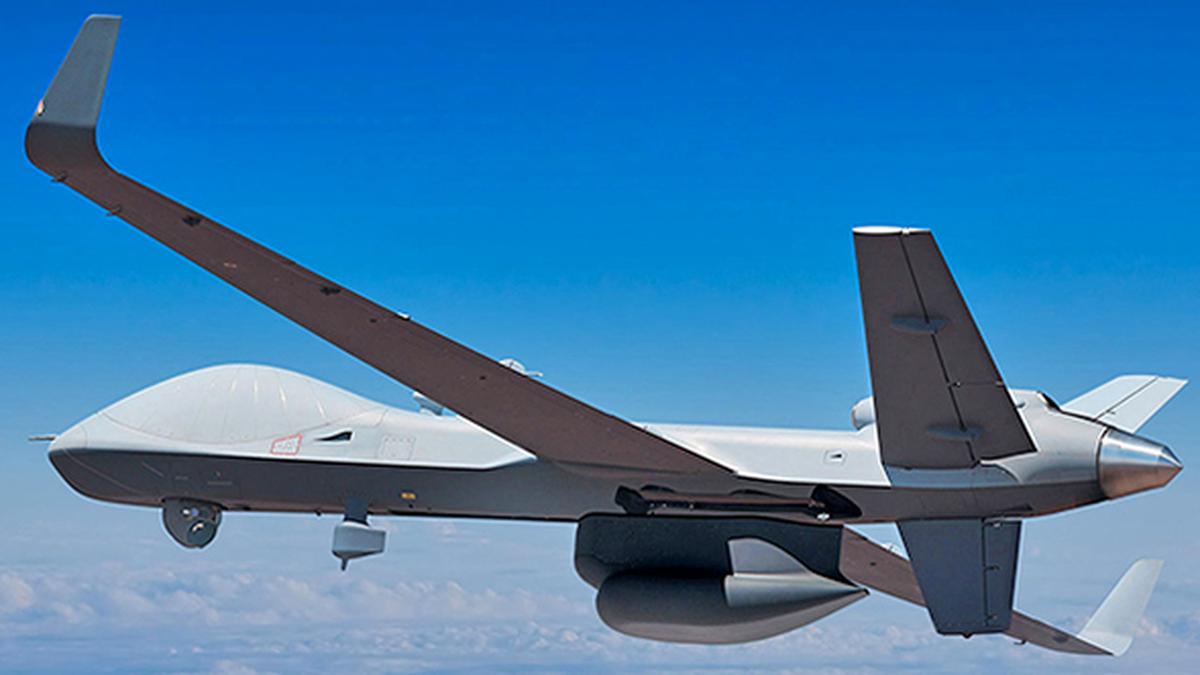
The MQ-9B Sea Guardian has a maximum flying altitude of 40,000 feet.
| Photo Credit: Special Arrangement
The Indian armed forces will receive the MQ-9B armed High Altitude Long Endurance (HALE) Remotely Piloted Aircraft Systems (RPAS), manufactured by General Atomics, between 2029 and 2030, according to defence officials in the know.
“The first MQ-9B is to be delivered in 51 months and the last by 72 months, from the date of signing of contract and first payment. Delivery is spaced out by 21 months,” a source said. This means that the 31 MQ-9Bs will be delivered to India between January 2029 and September 2030.

RPAS are large unmanned aerial vehicles (UAVs) that are operated through remote control by a person or a group of persons on the ground.
India signed a nearly $3.5 billion contract for 31 MQ-9B — including 15 Sea Guardians for the Indian Navy and 16 Sky Guardians comprising eight each for the Army and Air Force — under the Foreign Military Sales (FMS) programme of the U.S. government. This also includes two years of contracted logistics support. One contract was signed with the U.S. government for the 31 RPAS and another contract was signed with General Atomics Global India Pvt. Ltd. for Performance Based Logistics for Depot Level Maintenance, Repair and Overhaul (MRO) in India.
The PBL is up to eight years or 1,50,000 flight hours, whichever is earlier, and will be through Depot Level MRO in India that will be done by General Atomics through a tie-up with a local company, an official with knowledge of the matter said.

As per contractual terms, the delivery will be within 51 to 72 months from the date of contract and initial payment which means deliveries will be undertaken from January 2029 till September 2030.
Under FMS, the U.S. government and a foreign government enter into a government-to-government agreement called a Letter of Offer and Acceptance (LOA).
The deal for their high-end systems had seen many twists and turns before its eventual conclusion on Tuesday (October 15, 2024). The initial proposal many years back was for 10 Sea Guardians for the Indian Navy, which has a pressing requirement for persistent long-range intelligence, surveillance, and reconnaissance (ISR).
However, that proposal metamorphosed into a tri-service proposal for 30 systems with 10 for each service but that got stuck for several years over differences on their need and priority among the services, with the Navy pressing for them while the Air Force had reservations. As that moved forward a couple of years back, the deal faced reducing the numbers over the high cost but then eventually went to 31 systems for which the contract was signed.
Published – October 17, 2024 01:25 pm IST
